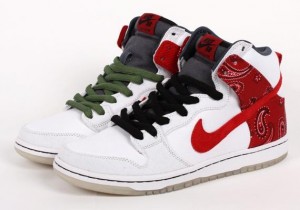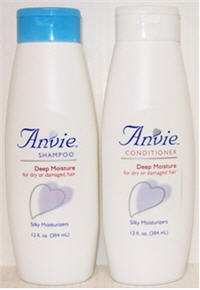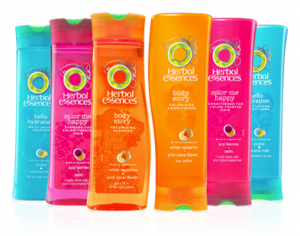I’m going to round the semester off by talking about global marketing and how multinational corporations changed their strategies according to national culture.
 McDonald’s, one of the largest fastfood restaurant chains in the world has to adapt its product (slightly) to fit in with national tastes and culture. For example, in India where the cow is a sacred animal, they cannot sell their famed beef burgers. So instead, so as not to lose out on the fastfood market, they created the Maharaja Mac, (literally meaning King Mac) a chicken equivalent of their world recognized Big Mac. Although severely dated this article goes into detail on its popularity.
McDonald’s, one of the largest fastfood restaurant chains in the world has to adapt its product (slightly) to fit in with national tastes and culture. For example, in India where the cow is a sacred animal, they cannot sell their famed beef burgers. So instead, so as not to lose out on the fastfood market, they created the Maharaja Mac, (literally meaning King Mac) a chicken equivalent of their world recognized Big Mac. Although severely dated this article goes into detail on its popularity.
To further this, in continental Europe beer is sold at McDonald’s. To many North American’s this is an unthinkable concept, however to Europeans this is accepted as the standard. Beer is a large part of European culture, especially in Germany, which has the second highest amount of breweries in the world, and Belgium.
McDonald’s has realized this and captured an even broader market of consumers. Even within North America there is quite a bit of variability within what products they offer. Different drink, ice cream and coffees to name a few.
Overall, I think that it is important for firms to pay close attention to the local culture of their target market, because if they do it wrong, they can easily offend people and could cause them to lose substantial portions of their global market.
As a big fan of Jon Olsson, one of the world’s most coveted freestyle skiers, I decided that for our required external blog that I had to link it to his video blog. Video blogging has become a very popular concept since the vast expansion of social media in the last couple of years and it provides an opportunity for individuals and companies to get their voice heard.
I think its particular blog is highly appropriate to marketing. The flow of sponsors combined with the advertising seen on his helmet (Red Bull) amongst a whole host of other companies, including Head, Carnegie, Yniq, J.Lindeberg and the list goes on. Although not quite as corporate as European hockey teams. Shout out to my boy Wyatt Hamilton on that one.
Anyways, on to the corporate blogging part. I feel that this part of social media offers some of the greatest scope for large brands because you can create an online presence that people can associate themselves with. Whether this be through comments on the blog or even replies to the original blog post it would be a great way for consumers to get the inside scoop on the products that they know and love.

For example, the unofficial Nike blog provides the latest information on limited edition shoes that the company is designing. But if Nike itself were to start a blog and provide information, I feel that it would offer more to the consumer and perhaps persuade them to buy Nike shoes, over Reebok, Adidas and other sports brands.
A misconception I have before taking this Comm 296 class, was that I thought marketing was all about how you advertised and branded your product. How wrong could I have been! However, as recently discussed in lecture, advertising plays a large role in how we view certain products.
Here are a collection of interesting items and their advertising campaigns that I have particularly enjoyed:

As we see, the advert above was placed as a national campaign across Ireland to get people to drink Guinness whilst watching Irish rugby (as if they needed anymore convincing!!)
Broadcast
Sticking with the theme of beer commercials, here is one of my favs.

Point of Purchase
This is an easy way for stores to bump their revenues as they capitalize on the consumers who are waiting in the line. Almost every grocery store I know does this. In my native land of England, this form of advertising is banned (well at least unhealthy items such as chocolate and chips)
Product Placement
There are countless examples of convenient product placements, pretty much every modern movie has a couple. The most prominent one that I could think of is Coca-Cola’s placement on American Idol. It is reported that they paid in excess of $26m for this deal!
Outdoor
Although not overly common, outdoor advertising can be a good way to attract people to your product, in the example show we see Nike advertising its latest soccer ball.
As we have learnt in class, price is the strongest determinant of whether we purchase a product or not. Whilst also being one of the biggest influences on our perceived value of the product.
One particular part of pricing that is interesting to me, is prestige pricing. How is it that Apple can charge a slight premium on its computers, or how can Rolex demand such a high price for a timing device. Below are a couple of commercials, that give the feel of prestige.


As you will notice, there is no mention of price. As the old adage goes if you have to ask you can’t afford it!
Both Lamborghini and Pagani have done a great job showcasting their product and showing its true class. They both use music and the mood to portray that their product is of greater value.
Some might ask what the difference is between a Zonda and a regular sportscar, in theory not much (maybe a little extra horsepower). So what is it that makes you want to spend $350,000 compared to $50,000 for a little extra performance?
Is it the satisfaction of having people turn their heads as you drive by? Or is it merely the prestige or showing up to a cocktail party in the most expensive car in the parking lot? Either way, these companies have done a great job in getting their consumers to perceive much higher value than the actual product is worth.
Hey Y’all
Today, I’m going to talk about a topic we covered in class at the beginning of the month, PACKAGING!! Being a consumer who rarely has the time to research about products (unless they are on my wish list), I tend to rely upon factors other than the brand name to make my purchases. To me packaging plays a vital role in the decision making process, and on a daily basis I purchase products that have cool packaging. For example, below are two bottles of shampoo:
On the left, we have Herbal Essences shampoo, which uses vibrant colours, cool imaging and an ergonomic shaped bottle to set it apart from its competitors. And below, we have Anvie, which has a plain white boring looking bottle, with little colour and not a lot of ‘wow’ appeal. There are obviously certain aspects that you would look for a product to fulfill. In this case it would be to wash your hair and give a lasting cleanliness. If you have not used the product before you would either ask for a friend’s recommendation or make a decision based upon the packaging.  I know which one I would rather buy based upon the ones above!! Often the packaging reflects what the marketer was trying to target when designing the packaging. For example, if you were looking to target younger, hip women I would buy the colourful bottle. If I was an older, more classical consumer (my Nan) I would probably purchase the white bottle.
I know which one I would rather buy based upon the ones above!! Often the packaging reflects what the marketer was trying to target when designing the packaging. For example, if you were looking to target younger, hip women I would buy the colourful bottle. If I was an older, more classical consumer (my Nan) I would probably purchase the white bottle.
So my golden piece of advice, if you have no idea which product to choose when making an impulse buy get the one with the most appealing packaging, it will rarely disappoint.
After cruising youtube for a few minutes (maybe it was hours), I thought about how videos become popular on the website. Most often it is due to word of mouth or a news broadcast that shares the video that then becomes watched my millions of people. When googling the subject with respect’s to blogs, a fellow student Braden Parker’s blog appeared. Having read his blog, I would agree that viral videos have a lot of potential to be used by companies to increase their followers.
The youtube famous, lip sync kid has several videos that have close to 10m hits. The potential for firm’s to use this type of video is substantial. If a relatively unknown new comer to a market used this kid in one of their videos it is highly likely that they would soon become well known. The cost of producing such a video would likely be relatively small and therefore would be viable for a small company with a small marketing budget.
When SmartWater contracted Jennifer Aniston to act as the face of their product, they highlight the potential of video going viral. So I leave you with the following video for this week to show the potential of videos going viral

After a long absence, there have been a number of things that have happened in the World, with the collapse of Egypt, Libya’s revolts and the Calgary Flames surging up the NHL Western Standings we have a lot to talk about. However, no story is more prolific than that of the train wreck that is Charlie Sheen. The drug-addict was featured on Good Morning America:

He gained over 1m followers on his twitter page within 24hours and has become somewhat of a viral internet phenomenon. His term “Winning” has now been picked up by McDonald’s as is proof that if you can make something go viral it will become popular. We can see in the following article that McDonald’s is open to suggestions, on its new product the McWinning. Linking this to marketing, what sort of pricing do we feel that McDonald’s will adopt? Will they continue their approach of EveryDay Low Pricing (EDLP)? or will they switch to Hi/Lo pricing for this product as they attempt to ride their profits on the short-term popularity of Charlie Sheen.
Personally, I feel that they will be most profitable by charging a slight premium to have a McWinning, after all consumers would be willing to pay a little extra to have a Charlie Sheen inspired meal. It will be interesting to see how this idea develops, as I’m sure McDonald’s does not want to associate itself directly to the drug-addicted, alcoholic maniac. I’m sure however, that in the short term this would be a quick easy way to make some $$$.
With the upcoming Superbowl this weekend and having recently read over Jonathan Cheng’s blog post from last night I thought this would be the ideal point to discuss aspirational marketing. For those of you unsure as to what aspirational marketing is, put simply it is the usage of celebrities in an advertising campaign to convince the consumer that their favourite people use their products. In Jonathan’s blog he talks about how Adidas has hired its athletes to play in an action type game to demonstrate that their product is durable and can perform in tough conditions. This would be aspirational marketing! I would like to introduce to you a commercial by a direct competitor, Nike. You may or may not have seen the following great video introduced by Nike just before the soccer World Cup in South Africa in 2010.

I know that it is a rather long video but this commercial touches upon the aspirational side of soccer. It depicts several players from the world’s best teams playing in a game of ‘do or die’ type soccer whilst using Nike’s new high performance cleats. The use of celebrities makes the consumer want to go and buy the product, at least I know I wanted to after watching it. You can also see national culture in this commercial, when they run through the various players, they show how the fans of that country are reacting whilst watching on TV (particularly when they focus upon Rooney and the stereotypical British press response). This use and understanding of national culture is key when targeting a group to sell to.
On a side note, by depicting different national soccer heroes it makes this commercial highly applicable throughout the world and although this may have been a costly commercial to produce, Nike can have no fear that this commercial will be successful worldwide.
Thus far in our marketing class, we have talked about the importance of the macro-environment and its affect upon consumer’s and their behaviour. One aspect that has really intrigued me, is perception of products and consumer’s behaviour.
A recent article I read stated that “IGA and Nielsen surveyed 1300 gamers who were exposed to ads served by IGA. The brands shown included Taco Bell, Jeep and Wrigley. Researchers found that after seeing an ad in-game, gamers had more favorable opinions of the brands seen in the game (61%) and also increased their brand recall (44% increase).”
This is a clear indication that the right ad, in the right game, could have unbeatable response from the consumer base! A great example of this is the video game Madden ’11. Old Spice Bodywash has sponsored the world’s most popular football game for a number of years and although its extensive branding on the game may appear to be too much for some, I like many other sports fans out there like to see this sort of marketing occuring.

Old Spice Swagger Ratings
I think that it makes the game seem more realistic when it shows red zone statistics and plays the Old Spice jingle after every touchdown. It even has a player ranking upon their level of “Old Spice Swagger”. These are all subtle ways to influence the buyers behaviour and perception for when they next go to purchase Bodywash.
Most people seem to think of most in-game ads as simple display ads, but marketers don’t have to think of them as “just” display ads. These in-game billboards are shown for a minimum of 2 seconds. If you think about that, it is at least the same time frame as a billboard seen in the real world except for one thing: the consumer playing a game is more engaged in that reality than consumers driving along the highway. IGA’s research showed that 2-second ads shown in-game increased how noticed the ads were by 100% over ads shown for only 1 second; brand recall increased 42% for these quick ads.

Golf is one of the world’s most lucrative sports markets, with the industry collecting around $62bn US in 2000. Almost all PGA tour events have prize cheques in excess of $2m with some events such as the season-ending FedEx Cup playoffs giving a prize of $10m to the winner. How much of that revenue relates to marketing you may ask? I would argue that the majority of this is applicable to marketing.

Taylormade, the second largest manufacturer of golf clubs in the US, has run several successful marketing campaigns that have resulted in them owning the title ‘#1 Driver in Golf’. This however, is a self-proclaimed title. It depends on how you define ‘#1 Driver in Golf’. Is it the number you sell per year, is it the number of tour players who are using your driver, is the best for price, is the the most technically sound driver… The list could go on. Many other golf brands use the same types of marketing to convince consumers that their product is the best on the market. For example Titleist, another leading golf brand, claims that they produce the ‘#1 Ball in Golf’.

By doing this the golf firms are convincing consumers that they have an inferior product. This is a cool strategy as they are trying to create a monopoly for themselves within a subset of the golf market. As with any highly competitive industry it is important to try to establish a competitive advantage. You could argue that Taylormade has done this by being the forerunner in the technology-side of club design. They were the first to install moveable weights in the driver head to produce different launch angles. This is an example of a strategy that Taylormade has employed, by committing to creating a competitive advantage in club technology.



